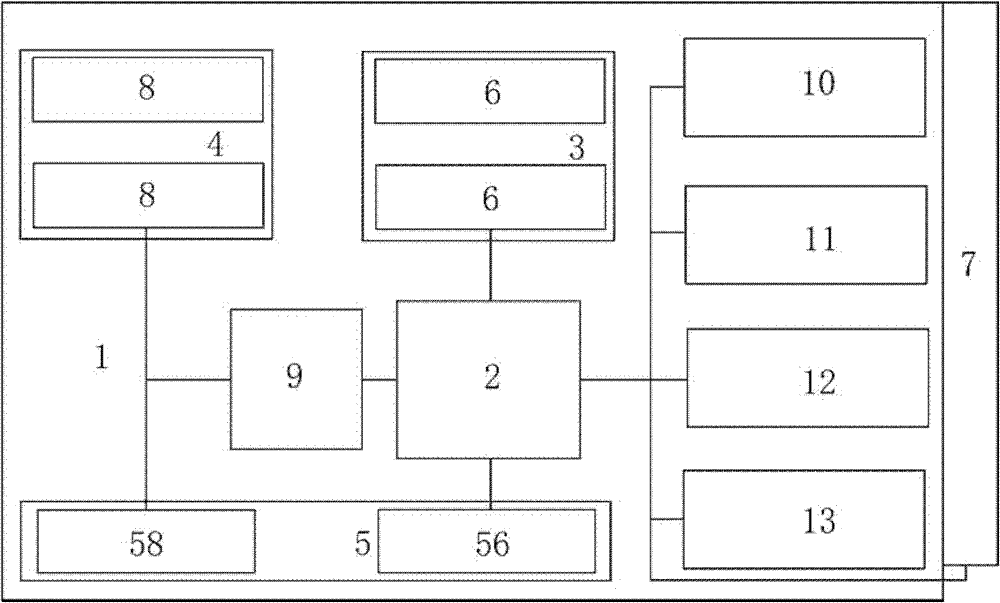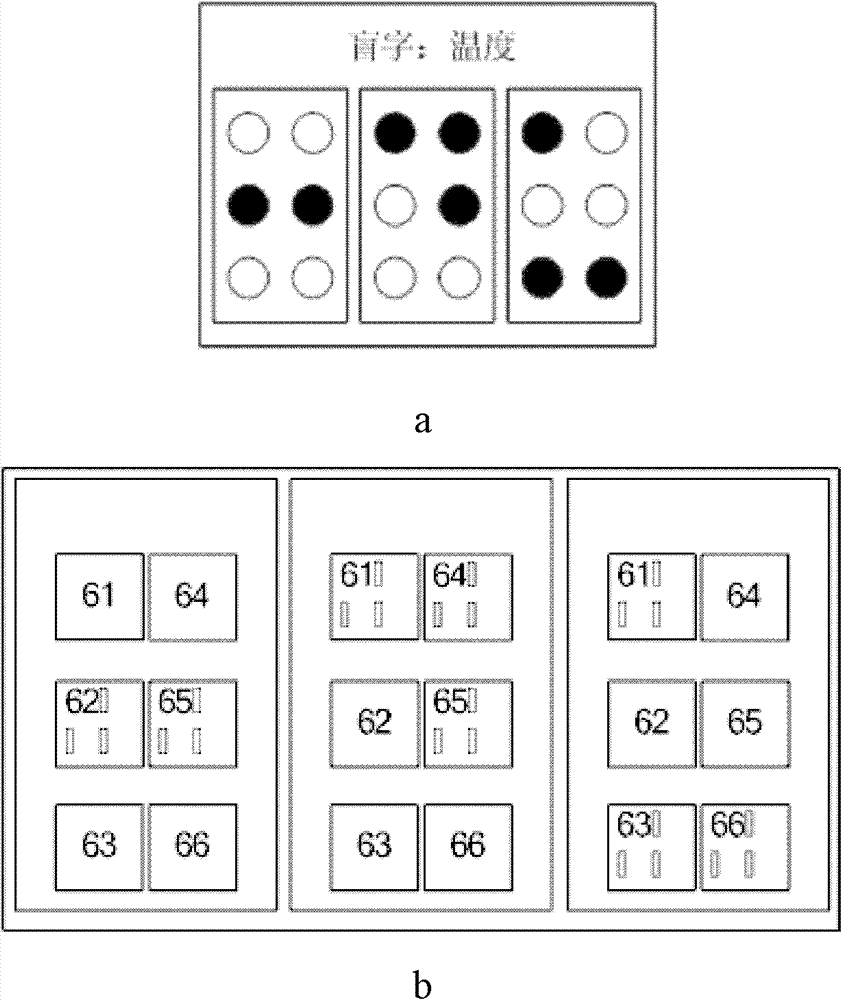Braille reading and writing device based on cold and heat signal
A writing device, hot and cold technology, applied in the information field, can solve the problems of complex structure of readers and mobile phone systems, constraints of readers, high cost, etc., and achieve the effect of large display area and writing area, easy promotion, and low cost
- Summary
- Abstract
- Description
- Claims
- Application Information
AI Technical Summary
Problems solved by technology
Method used
Image
Examples
Embodiment Construction
[0020] The specific implementation manners of the present invention will be further described in detail below in conjunction with the accompanying drawings and embodiments. The following examples are used to illustrate the present invention, but are not intended to limit the scope of the present invention.
[0021] The Braille reading and writing device in the present embodiment comprises a base 1, a system controller 2, a display screen 3, a writing screen 4, a control screen 5, a hot and cold display side 6, a hot and cold pen 7, a temperature measuring side 8, a control screen cooling Thermal display unit 56 , control panel temperature measurement unit 58 , data collector 9 , data memory 10 , wireless communication interface 11 , wired communication interface 12 and power supply interface 13 .
[0022] The hot and cold display squares 6 are inlaid and arranged on the display screen 3 ; the temperature measurement squares 8 are mosaic arranged on the writing screen 4 . The ...
PUM
 Login to View More
Login to View More Abstract
Description
Claims
Application Information
 Login to View More
Login to View More - R&D
- Intellectual Property
- Life Sciences
- Materials
- Tech Scout
- Unparalleled Data Quality
- Higher Quality Content
- 60% Fewer Hallucinations
Browse by: Latest US Patents, China's latest patents, Technical Efficacy Thesaurus, Application Domain, Technology Topic, Popular Technical Reports.
© 2025 PatSnap. All rights reserved.Legal|Privacy policy|Modern Slavery Act Transparency Statement|Sitemap|About US| Contact US: help@patsnap.com



